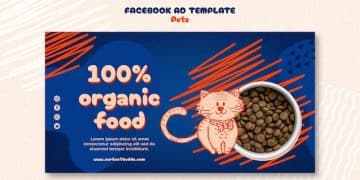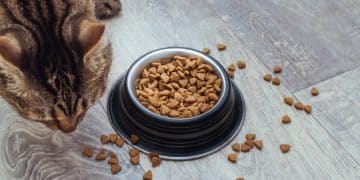The Truth About Raw Dog Food: Brands, Benefits, & Risks in 2025

The Truth About Raw Dog Food: A Review of Brands, Benefits, and Risks in 2025 is that it offers potential health advantages such as improved digestion and a shinier coat, but it also carries risks like bacterial contamination and requires careful planning to ensure nutritional completeness.
The pet food industry is constantly evolving, and one trend that has gained significant traction is the raw dog food diet. But is it truly a healthier option for your furry friend, or does it come with hidden dangers? Let’s dive into The Truth About Raw Dog Food: A Review of Brands, Benefits, and Risks in 2025 to help you make an informed decision.
Understanding Raw Dog Food
Raw dog food, often referred to as BARF (Biologically Appropriate Raw Food) or PMR (Prey Model Raw) diets, consists of uncooked meat, bones, organs, and vegetables. The philosophy behind this diet is that it mimics what dogs would eat in the wild, promoting better health and vitality. However, it’s essential to understand all aspects before switching your dog to this diet.
What is Raw Dog Food Made Of?
A typical raw dog food diet includes a combination of muscle meat, raw bones, organ meats (like liver and kidney), fruits, vegetables, and sometimes dairy products like yogurt or kefir. The emphasis is on whole, unprocessed foods that provide a balanced nutritional profile.
The proportions usually aim to replicate a whole prey animal, with around 80% muscle meat, 10% raw edible bone, 5% liver, and 5% other secreting organs. Vegetables and fruits are added for additional vitamins and fiber, but they make up a smaller portion of the diet.
Benefits of Raw Dog Food: Proponents’ Claims
Advocates of raw dog food diets claim numerous benefits, from improved digestion to enhanced energy levels. Some of the most commonly cited advantages include:
- Healthier Skin and Coat: A diet rich in natural fats and oils can lead to a shinier coat and reduced skin issues.
- Improved Digestion: Raw food proponents suggest that the enzymes present in raw food aid in digestion and nutrient absorption.
- Increased Energy Levels: Some owners report their dogs exhibit higher energy levels and overall vitality on a raw diet.
- Weight Management: The control over ingredients can help manage your dog’s weight more effectively.
While these claims can be compelling, they often lack extensive scientific backing. It’s important to consider both the potential benefits and the potential risks.
In summary, understanding what raw dog food entails, from its composition to the purported benefits, is crucial before considering this dietary switch. It’s a decision that should be made with careful consideration and, ideally, with the guidance of a veterinarian or a veterinary nutritionist.
Potential Risks of Raw Dog Food
While raw dog food diets have their advocates, it’s crucial to acknowledge the potential risks involved. These risks range from bacterial contamination to nutritional imbalances. Awareness of these dangers is essential for making an informed decision about your dog’s diet.
Bacterial Contamination Hazards
One of the most significant concerns with raw dog food is the risk of bacterial contamination. Raw meat can harbor harmful bacteria like Salmonella, E. coli, and Listeria. These bacteria can pose a threat not only to your dog but also to you and your family.
Proper handling and hygiene practices are crucial to minimize this risk. This includes washing your hands thoroughly after handling raw food, disinfecting food preparation surfaces, and keeping raw food separate from other foods. However, even with strict precautions, the risk of contamination remains.
Nutritional Imbalances
Another significant risk is the potential for nutritional imbalances. Raw dog food diets require careful planning to ensure they meet all of your dog’s nutritional needs. A poorly balanced diet can lead to deficiencies or excesses of certain nutrients, which can have serious health consequences.
It’s not simply a matter of throwing some meat and vegetables into a bowl. Dogs require specific ratios of protein, fat, carbohydrates, vitamins, and minerals. Without proper formulation, a raw diet can lead to issues like bone deformities, organ damage, and other health problems.
Digestive Issues and Foreign Objects
While some proponents claim improved digestion, raw food can actually cause digestive issues in some dogs. The high protein and fat content can be difficult for some dogs to process, leading to diarrhea, vomiting, or other gastrointestinal problems.
- Raw bones, while often included in raw diets, can pose a choking hazard or cause damage to the digestive tract if swallowed in large pieces.
- Some raw foods may contain foreign objects or contaminants that can harm your dog.

In conclusion, the potential risks associated with raw dog food cannot be ignored. While some advocate for its benefits, understanding the hazards of bacterial contamination, nutritional imbalances, and digestive issues is vital. Careful planning, diligent hygiene practices, and consultation with a veterinarian are essential to mitigate these risks.
Raw Dog Food Brands in 2025: A Comparison
As the popularity of raw dog food diets has grown, so too has the number of brands offering these products. Navigating this landscape can be daunting, as each brand claims to offer the best nutrition and quality. Here’s a comparison of some notable raw dog food brands in 2025.
Notable Raw Dog Food Brands
Here are some raw dog food brands in the market:
- Primal Pet Foods: Known for its freeze-dried and frozen raw food options, Primal offers a wide range of formulas with high-quality ingredients.
- Stella & Chewy’s: Another popular brand offering both frozen and freeze-dried raw food options, Stella & Chewy’s emphasizes high-protein, grain-free formulas.
- Raw Paws Pet Food: Specializing in raw meat, bones, and organs, Raw Paws Pet Food focuses on providing all the necessary components for a balanced raw diet.
Key Considerations When Choosing a Brand
When selecting a raw dog food brand, there are several key factors to consider:
- Ingredient Quality: Look for brands that use high-quality, human-grade ingredients.
- Nutritional Adequacy: Ensure the brand’s formulas are nutritionally complete and balanced, meeting the AAFCO (Association of American Feed Control Officials) guidelines.
- Safety Testing: Choose brands that conduct regular testing for bacterial contamination.
In conclusion, selecting the right raw dog food brand requires careful evaluation of ingredient quality, nutritional adequacy, and safety testing. Consulting with a veterinarian or a veterinary nutritionist can provide valuable guidance in making the best choice for your dog’s specific needs.
Switching to a Raw Dog Food Diet: A Step-by-Step Guide
If you’ve decided to transition your dog to a raw food diet, it’s crucial to do so gradually and carefully. A sudden switch can cause digestive upset and other health issues. Here’s a step-by-step guide to help you make the transition smoothly. The key principle is slowly replacing the old food with the raw food.
Consulting with a Veterinarian
Before making any changes to your dog’s diet, it’s essential to consult with a veterinarian or a veterinary nutritionist. They can assess your dog’s health status and provide personalized recommendations based on their age, breed, activity level, and any existing health conditions.
Your veterinarian can also help you identify any potential risks or contraindications for a raw food diet. For example, dogs with certain immune-mediated diseases or gastrointestinal issues may not be suitable candidates for a raw diet.
Gradual Transition
The key to a successful transition is to introduce the raw food gradually. Start by mixing a small amount of raw food with your dog’s current food. Over the course of several days, gradually increase the proportion of raw food while decreasing the amount of the old food.
A typical transition schedule might look like this:
- Day 1-2: 25% raw food, 75% old food.
- Day 3-4: 50% raw food, 50% old food.
- Day 5-6: 75% raw food, 25% old food.
- Day 7: 100% raw food.
Monitoring Your Dog’s Health
During the transition period, closely monitor your dog for any signs of digestive upset. This may include:
- Diarrhea.
- Vomiting.
- Loss of appetite.

In short, transitioning your dog to a raw diet requires careful planning, gradual implementation, and close monitoring. Consulting with a veterinarian and following a structured transition plan can help minimize the risks and ensure a smooth transition.
Ensuring Nutritional Completeness in Raw Dog Food Diets
One of the most important steps to take when feeding your dog raw food is to make sure adequate nutrition is provided. Balancing nutrient intake is critical to ensure the animal lives a long, healthy existence. Making sure the diet consists of the right proteins, fats, and carbohydrate ratios is critical.
The Importance of Balanced Nutrients
Dogs require a precise balance of protein, fats, carbohydrates, vitamins, and minerals to thrive. Without these elements, the animal’s health suffers. Here are a few nutrients that can cause issues:
- Protein: This is the building block of a healthy diet. It is essential for muscle development, tissue repair, and hormone production.
- Fats: Critical for energy, and supports skin and coat health.
- Carbohydrates: Helps to provide energy, and can promote better gut health.
Considerations for Your Dog’s Health
When ensuring your raw dog food diets fulfill the nutritional needs of your dog, here are some major considerations to review:
- Age: Older dogs might need more protein to sustain muscle mass.
- Overall health: Dogs with health problems require diets curated for their overall state.
- Lifestyle: Is your dog highly active, or more sedentary?
Vet Nutritionist
In conclusion, providing your dog adequate nutrition in their raw food can be a bit tricky. Make sure to consult with a professional, such as a vet nutritionist, to best understand the right quantities, amounts, and ingredients for your dog.
The Future of Raw Dog Food in 2025 and Beyond
The raw dog food industry is poised for continued growth and innovation as we head into 2025 and beyond. But what trends and developments can we expect to see in the years to come? Here is what to look for.
Developments and Innovations
As the raw diet grows in popularity, there will be more research and development into the nutritional dynamics and overall effects of raw food diets. Expect to see more transparency with ingredients, testing and safety. These advancements will propel raw food into the future.
Here are a few ingredients and items to keep an eye on as the market develops:
- Sustainable Sourcing: Brands will probably focus more intently on sustainably sourced ingredients. Not only will this satisfy customers, but it will protect the natural world.
- Enhanced Safety: Safety testing and sterilization methods will become the norm.
- Personalized Nutrition: Using machine learning and data, providers will be able to create ultra-customized nutrition plans for your pup.
Raw Food, and Your Dog
In summary, the raw dog food diet and industry will continue to grow and innovate as time goes on. It’s important to stay one step ahead and keep watch over the trends and innovations ahead so that your dog can expect nothing but the best. Make sure that you are always keeping up to date on the best information for your favorite furry friend.
| Key Point | Brief Description |
|---|---|
| 🐾 Benefits | Improved digestion and shinier coat are possible benefits of raw food. |
| ⚠️ Risks | Bacterial contamination and nutritional imbalances are potential risks. |
| 🥩 Ingredients | Raw meat, bones, organs, fruits, and vegetables. |
| 🩺 Vet Consult | Always consult with a veterinarian before switching to a raw diet. |
Frequently Asked Questions
▼
When properly handled and prepared, raw dog food can be safe. Ensure that the diet is nutritionally balanced and sourced from high-quality ingredients to minimize bacterial contamination risks.
▼
Some potential benefits of a raw food diet include improved digestion, healthier skin and coat, increased energy levels, and better weight management. However, individual results may vary.
▼
Switching to a raw diet should be gradual, mixing small amounts of raw food with your dog’s current food over several days. Monitor your dog for any signs of digestive upset during the transition period.
▼
Yes, raw dog food can potentially cause bacterial infections if not handled properly. Always practice good hygiene, washing hands and disinfecting surfaces after handling raw meat to prevent contamination.
▼
A vet nutritionist can help greatly if you’re questioning your dog’s nutritional intake from their specific choice of raw food. They can help with customizing ingredient needs and will allow you to be sure you’re on the right track.
Conclusion
After reviewing the brands, risks, and benefits of a raw food diet, hopefully, you have a deeper understanding of whether this regime is best for you and your pup. When correctly handled, understood, and administered, a raw dog food diet provides major advantages to your pup. Remember to consult with a vet nutritionist about quantities.





